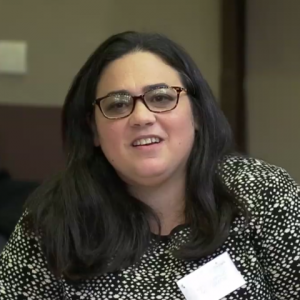Stories from the field
Let’s make a big fuss about relationships and accountability (Part 4)
Social accountability is about relationships. Many of the stories about doing social accountability in the “middle” route focused on building, nurturing and sustaining relationships with different stakeholders.
Innovative evaluations in the field are starting to point to the significance of these relationships to mobilize voluntary citizens, catalyze collective action, mobilize resources for solving problems (here) and strengthen delivery systems (here, here). Even studies with null findings are pointing towards the importance of nurturing semi-institutionalized trust and new relationships, step by step (here).
Yet, civil society organizations rarely report on their spending and achievements in terms of relationship-building or in terms of their social capital. Many funders take into account how well networked organizations are, but it takes a few years to build NEW relationships, if these are required for collective action. These tend to go beyond the length of single interventions. This is a challenge because participation, unlike health or infrastructure, is perched in bigger sunk costs in relationships and reputations. We need more investments in human resources than other types of costs (see here and here). Consequently, we need to get better at making the argument for investments that matter and understand what this may mean for young organizations, or organizations who shift approach/focus and how to support them (e.g. here)?
What practical insights about relationships in the middle get lost and what is told, reported, evaluated? For instance:
- – Informal ties are crucial, including jobs for the buddies or the boys, yet there may be few incentives (and even disincentives) to reveal them publicly.
- – Actors beyond simple state-society dichotomies, such as local universities (often public), are part of the story in the middle. They play a role brokering between state and civil society actors, but also crucially between state actors. I have witnessed this first hand through the work of my colleagues at the Grupo Politeia at the University of Santa Catarina in Brazil. The brokering role between state agencies is mostly left out, but seems critical to understanding how government as a whole and, hopefully, whole of society efforts can come about.
- – Relationships move backwards and forwards. However, few participants were actively reporting regarding the ins and outs of such shifts because they do not fit plans, log frames or the situation changed (see again, e.g. here).
- – Understanding who is inside or outside the relationship map: It was not clear that decisions to engage some actors and not to engage (or to disengage with) others was regularly documented. In some cases, these decisions may be based on limited fields of vision, creating a vicious cycle (not map – not engage; assumed a “bad” guy – not considered, assumed a “good” movement – extra efforts in engagement).
- – Collaborative relationships were prioritized among participants; there was little support for confrontation. Some people in the group had tried confrontation, but ultimately considered collaboration more effective in their current context (no one from Hong Kong or Bolivia in the room, but people from countries that experienced large scale protests not long ago). This insight is echoed by Sue Cant and Eric Sarriot in their analysis of mixed evidence . Findings from CARE and the Empowerment for Accountability project also lend strength that collaboration can be the most effective way to engage in many circumstances.
Lack of visible struggle, normative ideals, or media glamour does not make these actions less relevant or important. In fact, some would argue, that actions that ensuring that stakeholders don’t talk past each other, rebuilding dialogue, trust and relationships are more important than ever for cross-cutting action and resilient societies. It is time to act together and societies often do not know how to do it. In many places, social accountability practitioners have a head start and years of learning by doing. The next step is to help us understand when, where and how to exercise agency given alternative structural considerations. It’s past time to move beyond mantras and into more useful rules of thumb for and with action!
This blog post series reflects the views of the author. Thanks to Tom Aston, David Jacobstein, Maria Poli, Sol Gattoni, Courtney Tolmie, Jeff Thindwa, Marine Perron, and Jamila Delly Musa Abdulkadir for input and suggestions.
Help us share this blog series and trigger the discussion!
A social media toolkit is available here. It includes tweet templates, blurbs, tentative dates, as well as relevant handlers and links.
Read also: Boundaries, relationships, and incremental change, by Thomas Aston
Authors

Florencia Guerzovich
Independent consultant, Senior Advisor Monitoring, Evaluation, Research and Learning at the Global Partnership for Social Accountability, the World Bank
Rowlands Kaotcha
Mr. Rowlands Kaotcha is a Global Vice President and Director for Africa and Mexico, after having served as the Southern Africa Regional Director for The Hunger Project, Country Director in Malawi since 2004, and as dual Country Director of Malawi and Mozambique since October 2017. Recently, Rowlands led The Hunger Project’s expansion into Zambia and also serves as the Southern Africa coordinator for the Movement for Community-led Development.
related content
Capitalizing on the ability of civil society organizations to collect information from users of public services about the state of public service delivery, and effectively channeling this information to decision-makers in government and parliament can contribute to evidence-based policymaking, and, ultimately, to improved public services.
